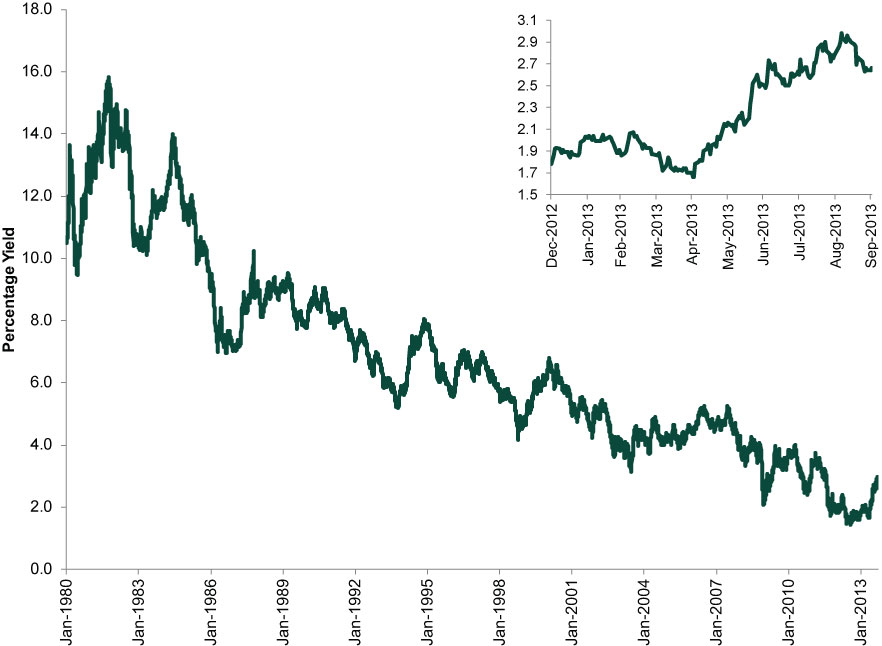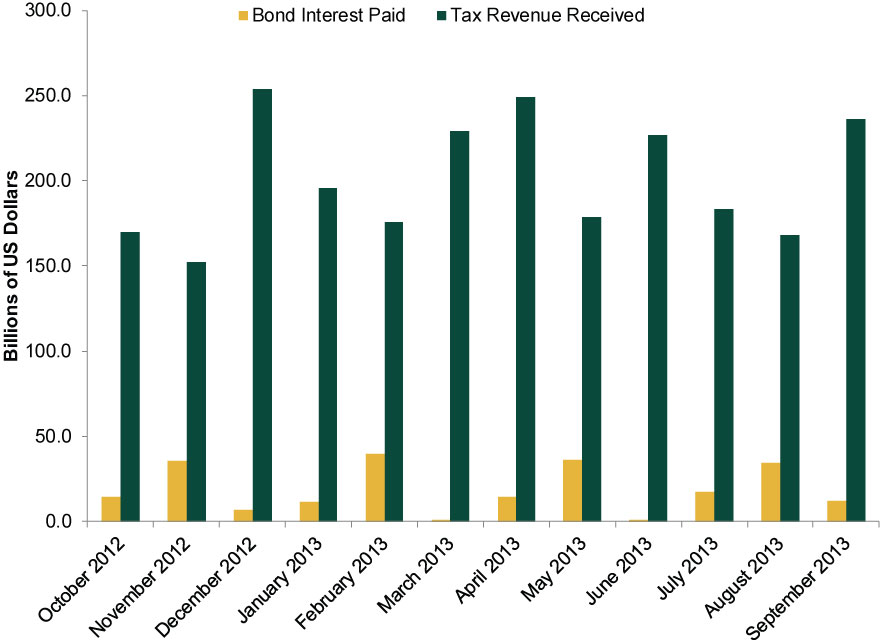Personal Wealth Management / Economics
Detonate Your Debt-Ceiling Fears
Some presume the debt ceiling is a huge risk looming in the near future, but there is ample evidence suggesting these fears are detached from reality.
If the government weren’t shutdown, you might be able to research the debt ceiling increases under the Nixon administration. Photo by David McNew/Getty Images.
Since Tuesday’s government shutdown, US stocks have been a mixed bag—up nicely the day after, flattish the following and volatile the third. None of this is to say it’s directly causal—it’s coincident. Yet some proponents suggest the market’s actually only marking time—many point to the debt ceiling as the real looming threat. What they don’t realize is the debt ceiling’s fundamental impact is nearly equally as limited as a government shutdown.
A common media meme holds the debt ceiling is more threatening as it could drive the US to default—and they point to the sharp volatility around 2011’s debt-ceiling drama as evidence. Folks, we’ve had 107 debt ceiling increases since its creation in 1917. The fact one episode—occurring amid some fireworks in Europe—led to a bull market correction isn’t solid evidence a repeat is in store. That, and the negativity around the debt ceiling was fleeting in nature. Now, don’t get us wrong: If the US government defaulted on Treasury bonds, it likely would be a very negative thing. But the presumption hitting the debt ceiling will bring a default is inaccurate.
It’s crucial to understand what a default really is. In the US government’s case, it is missing an interest or principal payment due bondholders. In media circles, it seems common to allude to the US government defaulting on its “obligations,” a broader term they use to include contractors, vendors and more. However, if that were actually a default, then the US government is effectively in default now—the government shutdown means some contractors and non-essential government employees aren’t being paid. But this isn’t default; default is a very specific thing.
And if there were big risk of default, you’d expect to see interest rates rise sharply. For example, take Greece (please). Greece defaulted twice in the past three years, and as the market sensed its growing insolvency, benchmark 10-year bond rates shot through the roof—at points topping 20%. US 10-year rates are presently around 2.6%. And they’ve fallen nearly 30 basis points (0.3 percentage points) since a September 5 peak at just over 2.9%. If an actual default were approaching—or even if the risk were materially rising—we’d expect to see rates rising to much higher levels than a historically low 2.6%.
Exhibit 1: US 10-Year Treasury Yields Since 1980 and Year to Date
Source: Federal Reserve Bank of St. Louis, as of 10/02/2013.
Why is the bond market seemingly unfazed? Likely because participants understand the likelihood of an actual default is nearly nil. If the debt ceiling isn’t raised, the Treasury will be forced to prioritize payments. And it’s overwhelmingly likely debt interest is paid before everything else. There is an argument to be made—one made by many in 2011—the US Constitution’s 14th Amendment, Section 4 (public debt clause) as interpreted by the Supreme Court in 1935 requires the government to honor its bonded debt before anything else.
Hitting the debt ceiling does allow for bond issuance to refinance existing debt, so the real question is: Does the government have sufficient tax revenues to meet debt interest payments? And the answer is a resounding yes.
The US Treasury publishes a daily statement of accounts (see it for yourself here), providing a window into its financial position. September 30's statement (the fiscal year’s closing statement) showed fiscal 2013 bond interest totaled $224.7 billion. The tax take? $2.419 trillion. The government took in taxes of $235.9 billion in September alone. You're reading that right, September's monthly take exceeded bond interest costs for the entire fiscal year. Federal government interest payments amounted to around 9% of the Treasury’s fiscal year 2013 tax take—a low figure by historical standards, easily covering payments.
Now, it's true the amount of interest due and tax revenue received each month fluctuate. Exhibit 2 plots fiscal 2013 bond interest payments and tax receipts by month. At no point did interest payments top or even approach tax revenues’ level. Looking ahead, consider that in the last 15 Octobers, interest payments have averaged 4.7% of monthly tax receipts. (The median is an even lower 3.6%, showing this figure is not the result of a mathematical anomaly.) Hence, it seems reasonable to expect tax revenues will easily suffice to service debt this October—effectively neutering default risk.
Exhibit 2: Fiscal Year 2013 Monthly Federal Tax Receipts and Debt Interest Payments
Source: US Treasury Department Financial Management Service.
What happens next? Payment prioritization continues. In my view, it's likely Social Security, Medicare, Medicaid and Federal unemployment insurance aid would be deemed high priorities, and using fiscal 2013 figures, ample tax revenue remains to cover them. After paying bond interest, the remaining $2.2 trillion in tax revenue is sufficient to cover these entitlements' combined price tag of roughly $1.6 trillion. About $600 billion is left over for the government to prioritize other spending.
So in all likelihood, this outcome isn't terribly dissimilar from a government shutdown. That’s not great for government contractors and workers from agencies deemed “non-essential,” but it’s a far cry from the economic catastrophe so many fear. And it’s basically a totally reparable scenario. After all, the US government has a time machine called retroactive enactment. That means missed spending could be paid after the fact when debt-ceiling legislation is in place. And all this is if we don’t get one of those inside-the-Beltway, last-minute deals Congress is so (in)famous for—like 2002, 2003, 2004 and 2011’s last-minute ceiling lifts.
We understand why the nerves around the debt ceiling are high. But when you really understand the facts and dynamics of the situation, you see the political and media rhetoric is pretty far removed from reality.
If you would like to contact the editors responsible for this article, please message MarketMinder directly.
*The content contained in this article represents only the opinions and viewpoints of the Fisher Investments editorial staff.
Get a weekly roundup of our market insights
Sign up for our weekly e-mail newsletter.

You Imagine Your Future. We Help You Get There.
Are you ready to start your journey to a better financial future?

Where Might the Market Go Next?
Confidently tackle the market’s ups and downs with independent research and analysis that tells you where we think stocks are headed—and why.








